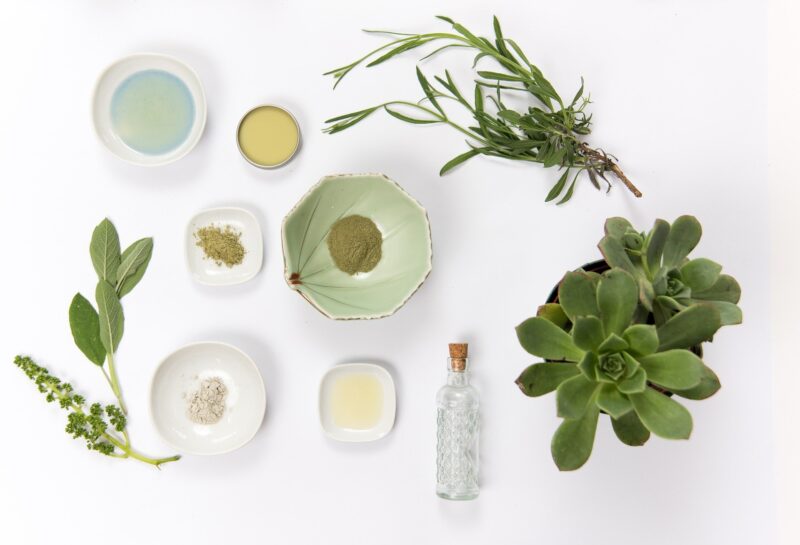No we are not lost in space, but we’re doing a damn fine job of collectively screwing up planet earth. In the land down under, we can’t even get organised enough to take reusable bags to the supermarket.
DID YOU KNOW?
- Currently, we’re exposed to well over 85,000 synthetic chemicals that are not fully tested. These chemicals are ubiquitous and found in the foods we eat, the water we drink and the air we breathe.
- Out of the 10,500-plus cosmetic ingredients that are used in personal care products, only 11% have been reviewed and catalogued. That is for single dose and single use only.
- There is no pre-market approval required for the sale of chemical-filled cosmetics, unless you are making a therapeutic claim.
- There are no legal definitions of the terms ‘natural’ and ‘organic’ and there are no laws to regulate their use.
- Fragrances are considered trade secrets and are not listed on labels because manufacturers are not required to disclose the components of fragrance ingredients. Instead the generic term ‘parfum’ is listed to disguise a multitude of potentially harmful chemicals.
If you’re over being in the dark about what dangerous chemicals your beauty products contain and you’re ready to be armed with more information, then Truth in Beauty is your solution.
Familiar axioms that are bandied about such as ‘the dose makes the poison’, and ‘60% of what you put on your skin gets absorbed within 26 seconds’, are broad, sweeping nebulous statements that support either side of the chemical argument.
Neither are really the point. It’s not surprising, that it’s now becoming evident that after an analysis of dozens of everyday chemicals, their combinations, cross relationship and interaction may increase the risk of cancer.
REGULATIONS
Chemicals in cosmetics are still considered safe in low doses. But who is regulating them and what happens when you ingest a little bit of a lot of different chemicals over time and mix them together in unknown and unquantifiable combinations and concoctions?
The layering and accumulative effect of applying personal care products has never been tested for safety or regulated and many could have a synergistic or enhanced effect.
SO, HOW ARE COSMETIC CHEMICALS REGULATED?
To the detriment of our health and longevity, the combination of chemicals and the layering of various ingredients is not the way that regulators typically think about cancer risk when they evaluate and assess the safety of a single compound. Instead, a test is carried out on an individual chemical on laboratory animals, exposing them to progressively smaller amounts until it no longer causes malignant tumours to grow. Then they take that dose, and determine the equivalent for humans, and apply what is called a ‘margin of safety’ by declaring that some small fraction of that low dose is safe for people as well.
The big assumption driving the margin of safety is that a smaller amount of a chemical is less dangerous than a larger amount.
Even experts agree that that’s not true for all chemicals. Some chemicals like ones that mimic hormones (endocrine disrupting EDC’s), may be more toxic at lower doses because our bodies are attuned to respond to minute quantities of natural hormones such as estrogen and testosterone.
But what’s even more sobering is that regulators haven’t required testing of mixtures of chemicals used in cosmetics at all, so the long-term and combined effects are unknown and unquantified. One of the most pressing issues is to implement changes in the way regulators assess the health effects of chemical mixtures. This isn’t going to happen unless we as consumers are in the know and take decisive and informed action.
HAS ANYTHING CHANGED?
In 2013, a research team (a coalition of 174 researchers from 28 countries) set out to determine whether mixtures of some chemicals, at small concentrations found in the environment, could plausibly trigger the formation of cancerous tumours. They focused on 85 chemicals that were impossible to avoid in modern life, that were likely to disturb biological function and were not thought to pose cancer risks at the very low doses that people tend to ingest or are exposed to them.
The researchers scoured the scientific literature to understand how each of these chemicals could affect 10 important processes that are essential to cancer development. Among them: tumour-promoting inflammation, resistance to cell death and the formation of new blood vessels to feed malignant cells.
In addition, they categorised whether each of the chemicals exerted biological effects at very low doses to which humans are ubiquitously exposed. (These doses are so small that they tend to be measured in parts per million or parts per billion.)
Of the 85 chemicals researchers examined, 50 were found to affect cancer-causing processes in the body, even at very low doses. These 50 everyday chemicals included bisphenol A (used in manufacturing plastics), triclosan (often found in hand sanitiser and anti-bacterial soap) and atrazine (a commonly used herbicide).
Each of these chemicals affects different processes that could lead to cancer for example – Bisphenol A makes cells less sensitive to signals to stop reproducing and atrazine encourages inflammation. It’s plausible that consuming mixtures of these chemicals is riskier than consuming any one individually.
Five years later and still very little has changed when it comes to harmful chemicals in cosmetics. Regulators and policy makers need to start looking at the totality of the exposure, instead of one chemical at a time.
Truth in Beauty is about transparency as opposed to fearmongering. It’s about making self-empowered and informed choices that support health and wellness. It’s about harm minimisation and stacking the cards in your favour.








5 thoughts on “There is no planet B”
I’ve read some excellent stuff here. Certainly value bookmarking for revisiting.
I surprise how a lot attempt you put to make any such
magnificent informative website.
What’s Happening i am new to this, I stumbled upon this I’ve discovered It absolutely useful and it has
aided me out loads. great topic.
Appreciate the recommendation. Let me try it out.
Hello,very informative post, thanks.
Excellent items from you, man. I have keep in mind your stuff prior to and
you’re simply extremely fantastic. I actually like what you have obtained here, really like what you’re stating and the best way through which you
assert it. You’re making it enjoyable and you still care for to keep it sensible.
I can not wait to read far more from you. That is really
a terrific website.